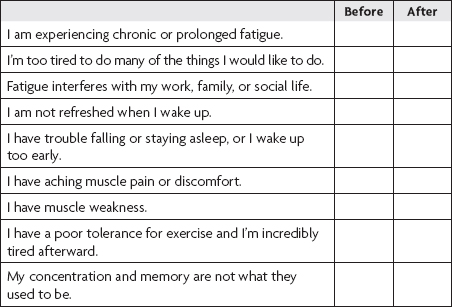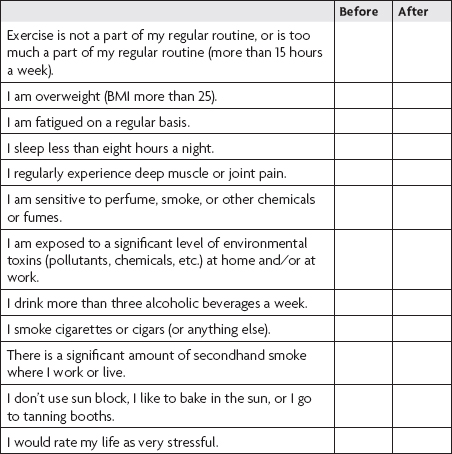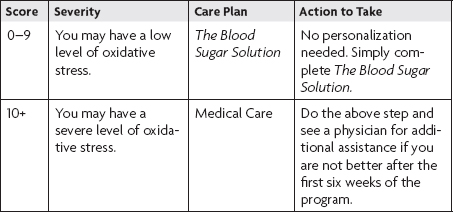

Among the most exciting and important findings in recent science is the discovery of how differences in our metabolism affect our risk for diabesity. Our metabolism turns calories and oxygen into the energy that fuels every cell in our body. This energy is made in little factories in our cells called mitochondria.
So what are mitochondria and what do they have to do with having more energy, losing weight, reversing diabesity, and living disease-free to 120?
Everything.
In each cell there are hundreds to thousands of these little energy factories. They exist in greater amounts in active organs and tissues, like the muscles, heart, and brain. The role of your metabolism is to take the oxygen you breathe and the food you eat and process it to make energy, the fuel for life.
When your mitochondria are not working properly, you suffer all the symptoms of low energy: fatigue, slow metabolism, weight gain, memory loss, pain, rapid aging, and more. Many things can go wrong and impede your metabolism, make it run less efficiently, or shut it down.
We have more than 100,000 trillion of these powerhouses in our body, and each one contains 17,000 little assembly lines for making ATP, our major fuel. They use over 90 percent of the oxygen we breathe. They take up 40 percent of the space inside the heart cells. Unfortunately for us, they are sensitive to damage from eating too much sugar and processed foods, environmental toxins, and anything that causes inflammation.
People with diabesity don’t produce energy in their mitochondria as well as healthy people do.1 And surprisingly, thin and otherwise healthy first-degree relatives of diabetics have mitochondria that are 50 percent less active than those of people without a family history of diabetes, making them much more likely to develop diabetes at some point in their lives.2 Often the cause of damage to our mitochondria is something we call oxidative stress. We are familiar with the process—it is seen as rust on a car, wrinkles on your face, an apple that turns brown in the air. But you can wrinkle on the inside, too.
The good news is that there are ways to enhance and optimize mitochondrial function, boost energy production, and reduce oxidative stress. The even better news is that doing these things can reverse diabesity and insulin resistance.
Jane, a fifty-eight-year-old patient of mine with pre-diabetes, had difficulty getting her weight and blood sugar under control. She ate well and exercised regularly, but just couldn’t get things to fall into place. We looked at a special urine test called “organic acids” that measures mitochondrial function in a different way from V02 max, or oxygen consumption.
We measured all the various steps in Jane’s metabolism that turn fat and carbohydrates into energy and we found a number of roadblocks. She needed more carnitine, alpha lipoic acid, and coenzyme Q10. After a few months on mitochondrial-boosting, energy-burning amino acids and nutrients, we tested her again and found her metabolism significantly improved. As a side effect, she lost 23 pounds, her energy increased, and her blood sugar normalized.
In my medical practice I often test all the steps in metabolism to see if there are any that are blocked or slow. Each step requires different helpers or cofactors. These are usually vitamins and minerals or amino acids. Your mitochondria need help transporting and burning calories. Specific nutrients, including carnitine, alpha lipoic acid, coenzyme Q10, the B vitamins (especially riboflavin [B2] and niacin [B3]), and branched-chain essential amino acids (BCAA) are critical in these steps.
You may be wondering how your metabolic engine is working and if you are rusting on the inside. Take the two quizzes below to see if your mitochondria are damaged and if you have too much oxidative stress. Remember to take this quiz before you start the program and again after the six weeks are over to measure the “before and after” change in your health. You may need extra individualized support based on your scores; I explain this in Week 6 of the plan.
Some people do indeed have a slow metabolism and reduced capacity to burn calories from food. Use this quiz to assess the severity of your damaged or slow metabolism. For any symptom you have experienced in the last month, place a check in the “Before” box. Place a check in the “After” box after you’ve completed the six-week program to see how much you’ve improved.

Free radicals or oxidative stress slow our metabolism and cause weight gain, diabetes, and aging.
Take the quiz below to find out if you are at risk for high levels of oxidative stress. For any symptom you have experienced in the last month, place a check in the “Before” box. Then find out how severe your problem is by using the scoring key below. Place a check in the “After” box after you’ve completed the six-week program to see how much you’ve improved.


Your mitochondria are sensitive to a variety of insults, particularly calorie-rich, high-sugar, nutrient- and antioxidant-poor foods. Toxins, infections, and anything causing inflammation can further damage our mitochondria. This leads to oxidative stress, or free radical production, which damages our mitochondria, cells, and tissues. When unchecked, oxidative stress turns on genes that increase insulin resistance and inflammation and reduce mitochondrial function and energy production in the body.3
You can reduce free radical activity and oxidative stress, and improve energy production in your cells, by combining a whole-food, nutrient-, phytonutrient-, and antioxidant-rich diet with supplemental antioxidants such as alpha lipoic acid and other mitochondrial-boosting supplements, as well as with special types of exercise. These are essential components of The Blood Sugar Solution program (see Part IV).
If you have diabetes, or a family history of diabetes, exercise is especially important. In fact, your genetic predisposition toward reduced mitochondrial function can be overcome by exercise. I recommend including strength training and a special type of aerobic conditioning called high-intensity interval training (HIT) in your regular routine. This combination has been shown to dramatically improve mitochondrial function, and leads to weight loss and improved cellular metabolism.4 In Part IV, I will explain how you can incorporate both forms of exercise into your daily life.
The single most important biological phenomenon that causes aging is diminished energy production in the mitochondria, which results in the development of insulin resistance. In fact, the “disease” of aging is really a disease of accelerated insulin resistance. If we fix that, we can reverse the aging process. Treatments are being developed to address mitochondrial dysfunction, including one based on resveratrol, the antioxidant compound in red grapes. Resveratrol acts on a master class of genes called sirtuins, which regulate insulin function and mitochondrial energy production. When these genes are turned on, they basically reverse the mitochondrial aging process and insulin resistance.
You might have heard of the rats fed high doses of resveratrol. They lived thirty percent longer and became fitter, even while eating the equivalent of the standard American poor-quality diet. They did it by having the equivalent of about 1,500 bottles of red wine, so don’t try this at home.
Calorie restriction also helps improve mitochondrial function, although it is hard to do. Excellent animal studies have shown that if you eat 30 percent fewer calories per day, you will live 30 percent longer.5 In an effort to extend their lifespan, a group of brave souls in the Calorie Restriction Society eats food high in nutrients but very low in calories. One man I met ate 5 pounds of celery for breakfast and a few pounds of tomatoes and cucumbers for lunch!
However, exciting new research points to a novel way to prevent the ravages of aging without having to eat 5 pounds of celery a day. In his medically dense book, Avoiding the First Cause of Death, Wulf Dröge explains how to extend your lifespan to 120 years old. All you have to do is carefully balance, repair, and rebuild your mitochondria. You can do that by reducing insulin production and optimizing amino acid and protein intake, as well as by exercising. Bottom line: Consume small amounts of low-glycemic-load carbs, along with easily used and absorbed amino acids and protein throughout the day. That’s The Blood Sugar Solution program. Studies show that taking the basic amino acid protein building blocks as supplements for repair and healing actually helps slow aging and reverses insulin resistance and diabetes.6 In Part IV, I recommend exactly what to take and how to get the nutrients and amino acids you need to reverse diabesity and promote healthy aging.
Remember, by modifying your lifestyle, doing interval training and exercising, eating a nutrient-dense diet, and taking certain supplements, such as carnitine, alpha lipoic acid, coenzyme Q10, the B vitamins, and branched-chain amino acids (BCAA), you can boost your mitochondrial function.7